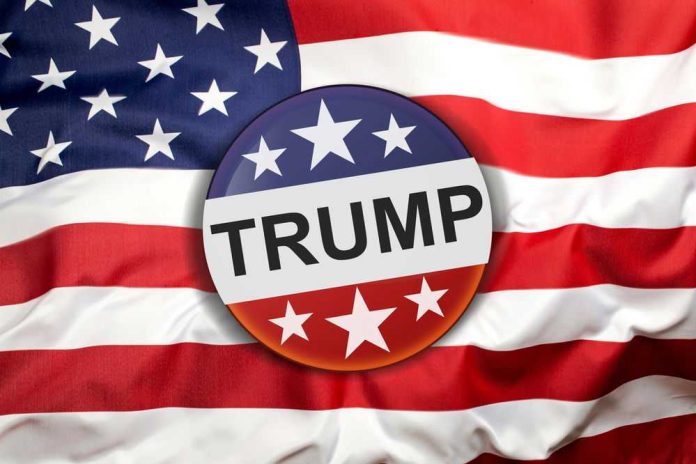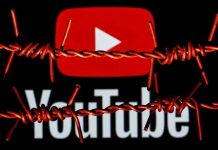
President Trump’s new executive order targets flag desecration with stiff federal penalties, igniting fierce debate over constitutional freedoms and national pride.
Story Highlights
- Trump signs executive order on August 25, 2025, directing aggressive prosecution for American flag desecration.
- Order includes immigration penalties for foreign nationals who desecrate the flag and refers cases to state and local authorities.
- Move directly challenges longstanding Supreme Court precedent that protects flag burning as free speech.
- Legal experts predict likely constitutional challenges and debate over First Amendment boundaries.
Trump’s Executive Order: Restoring Respect for the Flag
On August 25, 2025, President Donald Trump signed a sweeping executive order instructing the U.S. Attorney General to prosecute anyone who desecrates the American flag, including acts of burning, to the fullest extent permitted by existing law. The directive was announced from the White House and immediately covered by major news outlets. In addition to criminal prosecution, the order mandates federal agencies to deny immigration benefits to foreign nationals found guilty of flag desecration, extending the reach of enforcement beyond American citizens. The administration frames this move as a necessary response to recent high-profile incidents of flag burning during protests, asserting that the flag’s sanctity is essential to national unity and respect.
Legal and Constitutional Tensions
The order does not introduce new criminal statutes; instead, it directs federal officials to maximize prosecution under existing laws and clarify the boundaries of First Amendment protections. This approach directly challenges Supreme Court precedent established in Texas v. Johnson (1989), which ruled that flag burning is protected symbolic speech. The Trump administration justifies its stance by linking flag desecration to broader concerns about public order and anti-American sentiment, while critics argue that any crackdown risks unconstitutional overreach. The directive also refers cases to state and local authorities, seeking a coordinated judicial response while testing the limits of federal authority in matters of symbolic protest.
Stakeholders and Motivations
President Trump, Attorney General Pam Bondi, and the Department of Justice are the primary architects and enforcers of the order. They are motivated by a desire to reinforce national symbols and respond to public concern over protest tactics that many conservatives view as disrespectful or provocative. Federal agencies, including Homeland Security, are tasked with immigration-related enforcement, signaling a comprehensive crackdown on foreign nationals involved in flag desecration. Civil liberties organizations and protest groups, likely to challenge the order, represent a counterbalance, defending free speech rights and warning of government overreach. The Supreme Court’s previous rulings serve as both a legal barrier and a focal point for ongoing debate.
Immediate Impact and Political Ramifications
The executive order is now in effect, with the Department of Justice and Homeland Security developing guidance for law enforcement. No prosecutions have been reported under the new directive as of this writing, but the order has already intensified national debate. Supporters argue the move is necessary to deter provocative acts and reinforce patriotism, while opponents warn that it may chill legitimate protest and invite costly legal challenges. Politically, the directive energizes Trump’s conservative base, portraying the administration as a staunch defender of traditional values and national pride. Socially, it brings the long-standing tension between free speech and respect for national symbols back to the forefront of American discourse.
Legal Analysis and Expert Perspectives
Legal scholars generally agree that the Supreme Court’s protection of flag burning as symbolic speech makes the executive order vulnerable to litigation. However, Trump administration officials contend that the directive targets conduct that may incite violence or constitute “fighting words,” which do not enjoy First Amendment protection. The effectiveness of the order will ultimately depend on how courts interpret its scope and whether it can be reconciled with existing jurisprudence. While some experts describe the order as largely symbolic, its potential impact on legal precedent and protest activity remains significant. The likelihood of court challenges is high, and the outcome may shape the boundaries of constitutional rights for years to come.
Trump Signs Executive Order Directing AG to Prosecute Flag Desecration https://t.co/TF1mMz7XNO
— Ziggy Pernot (@ZiggyPernot) August 25, 2025
Broader Implications and Limitations
Short-term effects include increased scrutiny of protest-related flag desecration and a possible chilling effect on activism. Long-term, the order is expected to provoke legal challenges, setting the stage for potential Supreme Court review and continued debate over national symbols and free speech. Protesters and activists face heightened legal risks, and immigrant communities may encounter new barriers to residency or citizenship. The legal sector anticipates a surge in constitutional litigation, while law enforcement agencies must navigate complex directives. Although the order’s direct economic impact is minimal, the social and political consequences are profound, reinforcing divisions over patriotism, individual liberty, and government authority.
Sources:
White House Fact Sheet: President Donald J. Trump Protects the American Flag from Desecration
Axios: Trump signs executive order targeting flag burning
Official Executive Order Text: Prosecuting Burning of the American Flag
CBS News: Trump signs order on flag burning, cashless bail







